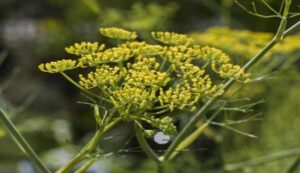Asafoetida Cultivation: Farmer brothers will earn a lot from asafoetida cultivation, know how
Asafoetida Cultivation: This information is helpful to farmers who want to make a good living. Farmers now engage in a variety of agricultural practices that benefit them. At the same time, farming is another activity that may quickly make farmers wealthy. In this age of inflation, farmers may grow asafoetida. Asafoetida cultivation may provide a healthy return at little expense. In winter, asafoetida is grown, and sandy soil that drains well is said to be ideal for it. The ideal time of year to grow asafoetida is from August to September. Three to four species are suitable for asafoetida cultivation based on India’s climate.

Originally, asafoetida fennel was thought to be an Iranian herb. From the Mediterranean Sea region to Central Asia, this plant may be found. Asafoetida is found in portions of Punjab and Kashmir in India. Asafoetida plants have a length of 1 to 1.5 meters. It is mostly grown in Turkmenistan, Iran, Afghanistan, and Balochistan. It is said to grow best at temperatures between 20 and 30 degrees.
It Can Get Damaged in Strong Sunlight
The liquid taken from the plant’s root is used to make asafoetida. Gum and starch are combined to make this liquid in tiny bits. It is best to keep asafoetida plants in a shaded area rather than in direct sunshine. Growing asafoetida requires a cool environment; direct sunshine might kill the plant.
Good Profit
A hectare of asafoetida costs Rs 3 lakh to cultivate. In the fifth year, the crop yields a profit of almost Rs 10 lakh. In the market, one kilogram of asafoetida costs between forty thousand and forty-five thousand rupees. Asafoetida doesn’t need much watering since its roots are deep and lengthy. Irrigate only when necessary once the plants have established. Continue to add fertilizer occasionally. Continue pulling weeds occasionally.

